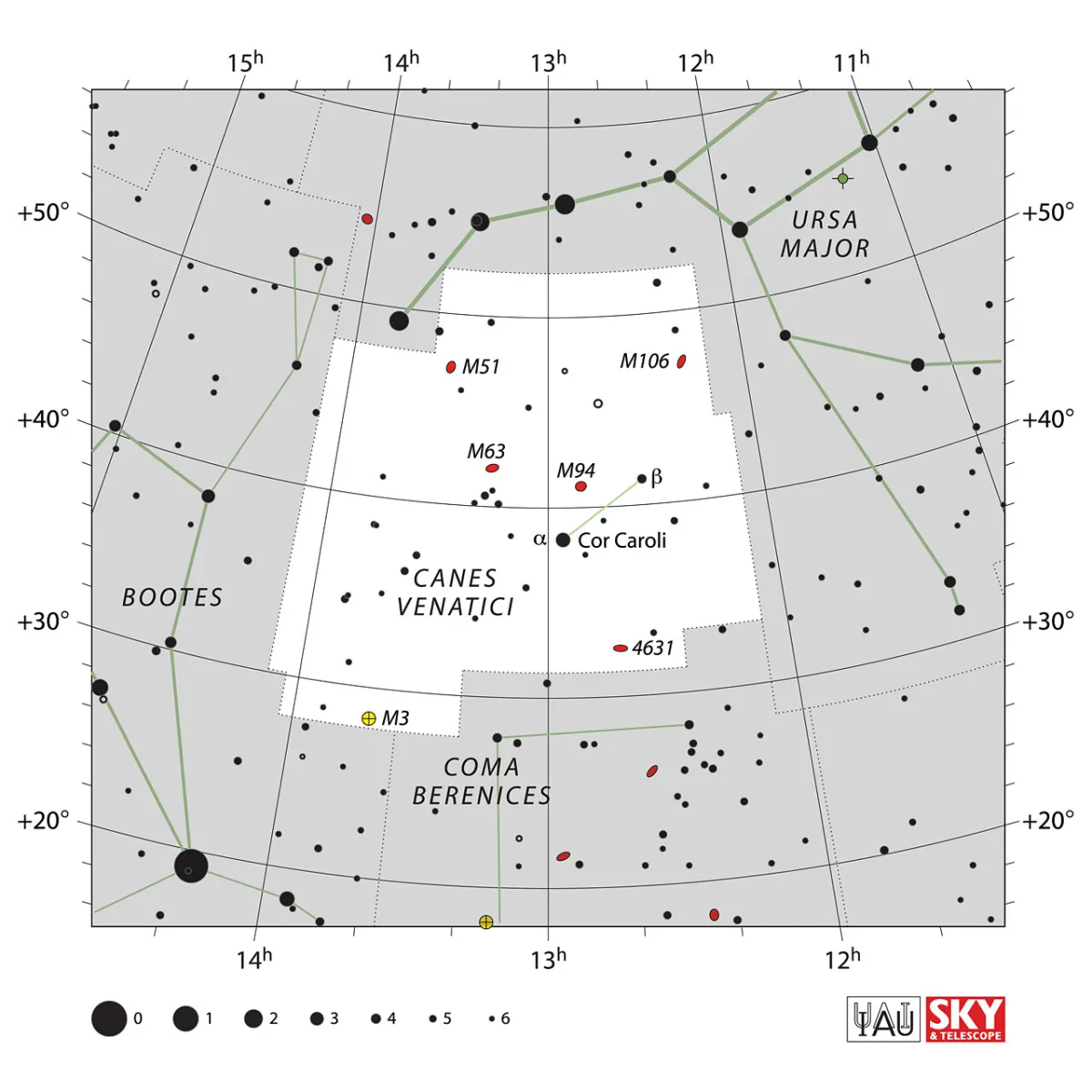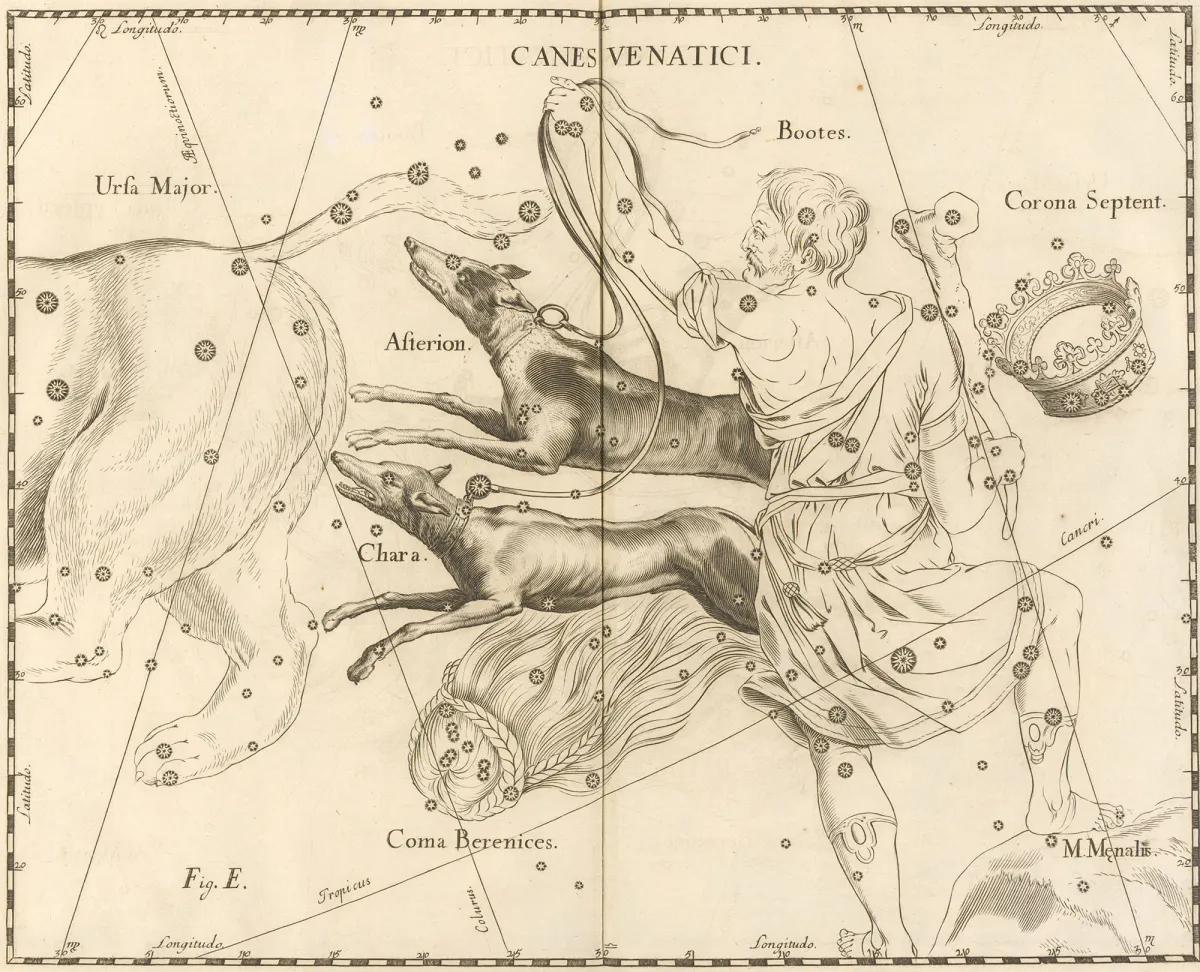Constellation Canes Venatici (Hunting Dogs)

Properties
Canes Venatici is located south of the Big Dipper drawbar. It contains a number of faint stars, of which only the two brightest are clearly visible to the naked eye. The constellation contains numerous galaxies, which belong to a gigantic cluster that extends from Ursa Maior via Coma Berenices down to the Virgo. The area of this constellation is 465 square degrees and the centre culminates at midnight on around April 7th. [9, 15]
| α2 CVn | Cor Caroli |
| β CVn | Chara |
| IAU Name | Canes Venatici |
| IAU Genitive | Canum Venaticorum |
| IAU Abbr. | CVn |
| English Name | Hunting Dogs |
| Culmination at local midnight | 9 April |
| Season (Latitude +0.0°) | December … September |
| Right Ascension (J2000.0) | 12h 06m 22s … 14h 07m 33s |
| Declination (J2000.0) | +27° 50' 38" … +52° 21' 35" |
| Area | 465 deg2 |
| Neighbours (N↻) | UMa, Com, Boo |
Deep-Sky Object Descriptions
Catalogues

Mythology and History
The constellation was introduced in 1690 by the Gdańsk astronomer Johannes Hevelius in his work Prodromus astronomiae. For centuries it was considered part of Ursa Maior. It depicts the two dogs, Asterion and Chara, the bear guardian, who drive the bear around the celestial pole. [7, 51]
The brighter of the two striking stars is called Cor Caroli (Heart of Karl). According to folklore, the star was named by Edmund Halley in honor of King Charles II of England. It is said that the star shone particularly splendidly on the evening of the king's return to London in May 1660. Others claim that the original name was Cor Caroli Regis Martyris, in honor of Charles I, who was executed many years earlier. [88]